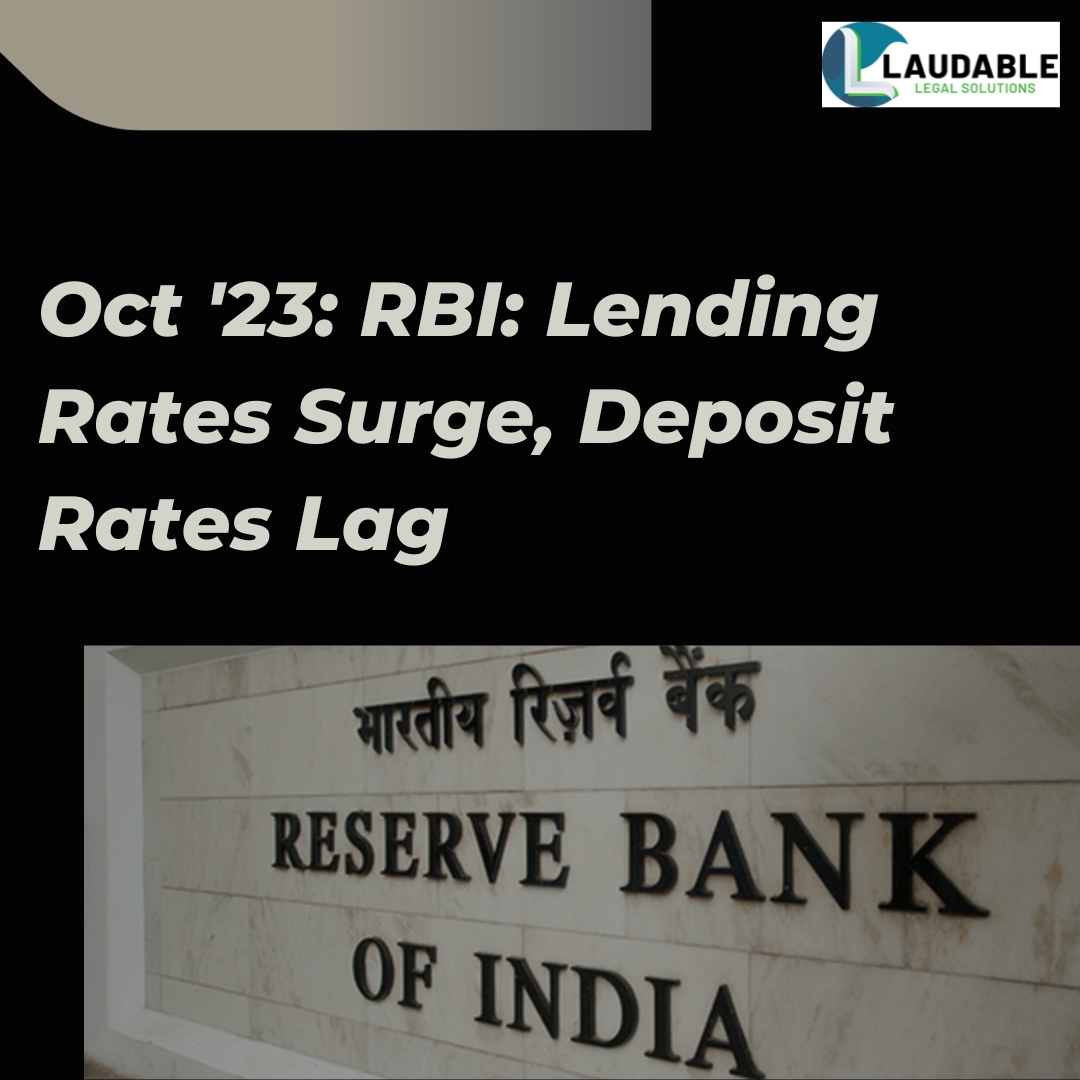

Publish Date: December 1, 2023
Table of Contents
ToggleIn the financial landscape of October 2023, a noticeable discrepancy has emerged between lending rates and deposit rates, shedding light on the dynamics within the banking sector. While lending rates experienced a substantial uptick of 12 basis points (bps), deposit rates, in contrast, surged to a more modest 6 bps.
This divergence prompts a closer examination of the Weighted Average Lending Rate (WALR) on fresh rupee loans and its implications for both consumers and financial institutions.

Lending Rates Soar:
The Weighted Average Lending Rate (WALR) on fresh rupee loans offered by commercial banks recorded a notable increase from 9.38% in the preceding month to 9.5% in October 2023. This surge of 12 bps indicates a significant adjustment in the cost of borrowing for consumers. The reasons behind this escalation are multifaceted and warrant a comprehensive exploration.
Deposit Rates Lag:
Contrary to the pronounced surge in lending rates, deposit rates witnessed a comparatively modest increase of 6 basis points. This differential movement between lending and deposit rates raises questions about the transmission mechanism within the banking sector.
Impact on Consumers and Businesses:
The divergence in lending and deposit rates carries implications for both consumers and businesses navigating the financial landscape. Higher lending rates imply increased costs for borrowers, affecting personal loans, mortgages, and business financing.
On the flip side, the relatively slower pace of deposit rate increases may impact savers and fixed-income investors, influencing their returns on deposits and other interest-sensitive investments.
Similarly, the WALR on outstanding rupee loans surged to 9.84% from 9.83% in September 2023. The one-year median Marginal Cost of Fund-based Lending Rate (MCLR) continued to retain its position at 8.7% in November 2023, as per the RBI.
In October 2023, the Weighted Average Domestic Term Deposit Rate (WADTDR) for outstanding rupee term deposits increased to 6.75% from 6.69% in September. This rise continued for fresh rupee term deposits, reaching 6.31% in October compared to 6.32% in September.
This shift is influenced by the benchmark policy rates, which have surged by 250 bps since May 2022. This upward trajectory, initiated by the central bank, has not been entirely mirrored in deposit or lending rates by banks.
Interestingly, public sector banks have shown relatively higher transmission compared to private sector banks since May 2022. However, the overall rate of transmission remains only half of the rate at which the central bank increased the policy rates.
This discrepancy raises questions about the extent to which financial institutions are aligning their rates with the central bank’s directives.
The contrasting movements in lending and deposit rates during October 2023 underscore the intricate interplay of economic factors, policy decisions, and competitive dynamics within the banking sector.
The surge in lending rates, outpacing deposit rate increases, reflects a complex landscape where financial institutions navigate the delicate balance between risk management, profitability, and customer acquisition.
As consumers and businesses adapt to these changes, a comprehensive understanding of the underlying drivers is crucial for informed decision-making in the evolving financial environment.